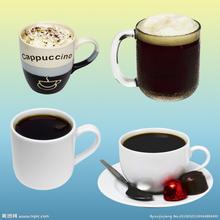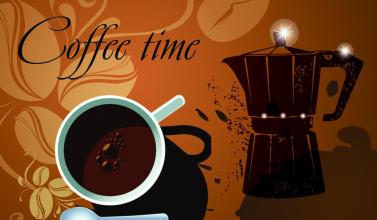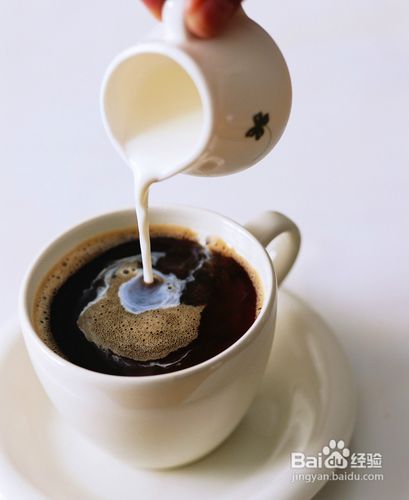Strong sweetness of Panamanian Rosa Coffee Flavor description Manor Taste characteristics introduction of boutique coffee beans
Panama covers an area of 75517 square kilometers, with a length of 772km and a width of between 60km and 177km. The coastline is 2988 kilometers long and the land boundary is 555 kilometers long. In terms of longitude and latitude, Panama is located between 7 °and 10 °north latitude, and between 77 °and 83 °west longitude. Panama is rich in forest resources and has many tree species, including mahogany, sequoia, teak, mahogany, cedar and other valuable timber. The forest area of Dalian Province in the east is the most widely distributed, but it has not been fully developed due to lack of market and for reasons such as national defense and protection of the natural ecological environment. [5] according to FAO estimates in 2010, the forest area of Panama is 4.29 million hectares, accounting for 57 per cent of the land area. The Panamanian flag was launched on November 3, 1904. The flag is rectangular and the ratio of length to width is 3:2. The flag consists of four rectangles of white, red and blue. White symbolizes peace; red and blue represent the former Panamanian Liberal Party and the Conservative Party respectively, and they are also symbols of the two parties' United struggle for the interests of the nation. The blue star on the white background at the top left represents loyalty and integrity, while the red star on the white background at the lower right represents the authority of the law. The design of the crosshairs divided into four pieces represents that Panama is located at the junction of South America, North America, Atlantic and Pacific Ocean. Red, blue and white are the colors of the American Stars and Stripes that support the independence of Panama. The flag was designed by Manuel Amador Guerrero, the first president of Panama.
The fragrance of flowers, tropical fruits, strong sweetness; these are the feelings that Rose Summer has always given us. Properly baked, they make you feel like sipping the fragrance of a bouquet of flowers. You may not know the story of Rosa, an ancient native species from Ethiopia that was brought as a coffee sample to a coffee experimental garden in Costa Rica and distributed to several small farms for small-scale trials.
Not many people followed Rose Summer until one day, Esmeralda Manor in Panama separated it from other varieties and won the national coffee competition.
She is so extraordinary that the fruity and floral elements are like Yega Xuefei from Africa and Ethiopia on the other side of the world. Of course, these are all old news now. Some small farms also get summer roses and are eager to grow their own roses.
However, the results are different, and this "star" variety seems to have different tastes in different geographical locations due to the influence of weather, soil and altitude. However, in the Aktenan fruit area, we see the typical rosy summer characteristics: the slender bean shape, the changes during baking, and the elegant and unripe flavor in the cup. Rosa coffee raw beans have a very beautiful blue-green, jade-like warm texture, smell of fresh grass, peach, berries and oolong tea that most coffee beans do not have. It seems that aroma and taste need to be associated with this kind of thing, but the faint smell of tea is obviously felt by us. In 1931, it was exported to Kenya in obscurity from the Mount Geisha Mountain in southwestern Ethiopia (which happens to be synonymous with Japanese geisha), wandered around Tanzania and Costa Rica, and was transplanted to Panama in the 1960s, and then it took nearly half a century before it became a blockbuster. Beat the victorious Bourbon, Kaddura, Kaduai, Tibica and other varieties to win the first prize of the Panama National Treasure Bean Cup Test Competition in 2005, 2006 and 2007. In 2007, the International famous Bean Cup Test sponsored by the American Fine Coffee Association (SCAA) won the championship again, and the bidding price was sold at US $130 per pound, setting a record for the highest price in the history of competition beans. It is reported that the later Panamanian national treasure bean competition will be divided into two groups: Rose Summer and non-Rose Summer, so as not to be robbed of the brilliance of other varieties by Rose Summer. Rosa is a member of the Tibika family, but it became famous more than 70 years after leaving Ethiopia, and fulfilled the saying that Ethiopia is a treasure trove of Arabica genes. Giving a variety to go abroad is enough to stir up trouble in the coffee market.

Important Notice :
前街咖啡 FrontStreet Coffee has moved to new addredd:
FrontStreet Coffee Address: 315,Donghua East Road,GuangZhou
Tel:020 38364473
- Prev

Description of flavor characteristics of Ethiopian coffee beans sharing of water temperature parameters of hand grinding ratio
In the fifties and sixties of this century, many African countries became independent one after another and adopted green, yellow and red as the colors of the national flag, so they were called pan-African colors. Ethiopia is one of the ancient countries in Africa, with a long history of more than 3000 years, giving green, yellow and red colors deeper roots in this land. Calendar
- Next

Description of Bolivian Coffee Flavor with dry aroma of Almond introduction to the method of taste treatment of grinding degree
Flavor: dry aroma of roasted nuts and almonds. Lake Titicaca of oranges and pomelos is located on the Coya'ao Plateau on the border of Bolivia and Peru. It is the highest and largest freshwater lake in South America. It is also one of the highest freshwater lakes in the world. It is also the highest navigable lake in the world. It used to be the third largest lake in South America.
Related
- Detailed explanation of Jadeite planting Land in Panamanian Jadeite Manor introduction to the grading system of Jadeite competitive bidding, Red bid, Green bid and Rose Summer
- Story of Coffee planting in Brenka region of Costa Rica Stonehenge Manor anaerobic heavy honey treatment of flavor mouth
- What's on the barrel of Blue Mountain Coffee beans?
- Can American coffee also pull flowers? How to use hot American style to pull out a good-looking pattern?
- Can you make a cold extract with coffee beans? What is the right proportion for cold-extracted coffee formula?
- Indonesian PWN Gold Mandrine Coffee Origin Features Flavor How to Chong? Mandolin coffee is American.
- A brief introduction to the flavor characteristics of Brazilian yellow bourbon coffee beans
- What is the effect of different water quality on the flavor of cold-extracted coffee? What kind of water is best for brewing coffee?
- Why do you think of Rose Summer whenever you mention Panamanian coffee?
- Introduction to the characteristics of authentic blue mountain coffee bean producing areas? What is the CIB Coffee Authority in Jamaica?

